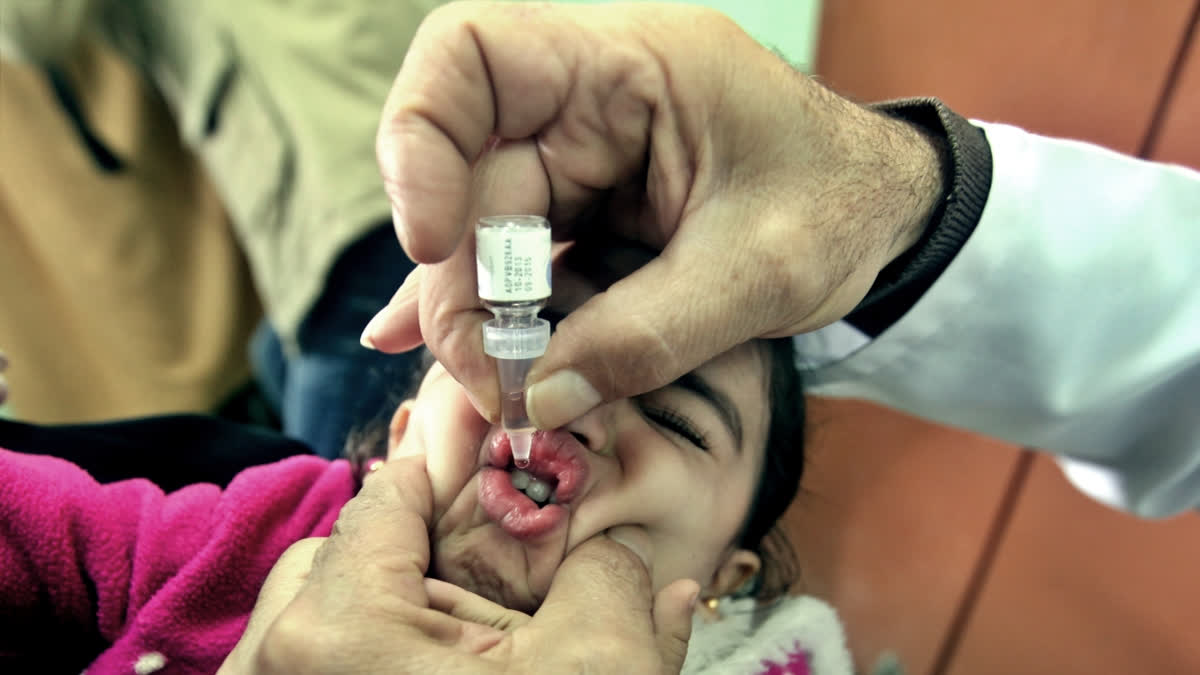Hyderabad: Polio, a viral disease known for its rapid spread, especially among children under the age of 5, has been a long-standing global health concern. The polio virus enters the body, affecting the nervous system, and potentially leading to paralysis and lifelong consequences. It primarily spreads through the fecal-oral route, but various other vectors contribute to its transmission.
According to Centers for Disease Control and Prevention, World Polio Day, commemorated on October 24 each year, provides an opportunity to highlight global efforts toward a polio-free world and honour the tireless contributions of those on the frontlines in the fight to eradicate polio from every corner of the globe.
Progress- The last few decades have seen incredible progress in curtailing and completely eradicating this disease. Through concerted efforts from governments, organisations, and health workers, the global incidence of polio has been reduced by over 99% since 1988. In many regions, the disease has been completely eradicated.
History- The international community, led by the World Health Assembly in 1988, initiated a worldwide campaign for its eradication. Governments, organisations, and foundations such as the World Health Organization, UNICEF, the US Center for Disease Control and Prevention, Rotary International, Bill & Melinda Gates Foundation, and Gavi Vaccine Alliance, all joined forces in this monumental effort.
The results of this collaborative campaign have been remarkable. Since 1988, wild poliovirus cases have decreased by over 99%. Previously, there were approximately 350,000 cases in 125 countries. However, in 2021, only six cases were reported. Wild poliovirus exists in three types: Type-1 (WPV1), Type-2 (WPV2), and Type-3 (WPV3). WPV2 was successfully eradicated in 1999, followed by WPV3 in 2020. As of 2022, WPV1 remains only in Pakistan and Afghanistan.
Polio-free world- To achieve a polio-free world, the complete eradication of polio is vital. No corner of the globe is truly safe from the threat until polio is entirely eliminated. In 2022, over 3,000 representatives from more than 115 countries gathered in Berlin, Germany, including scientists, experts, and world leaders. They committed to providing $2.6 billion to eradicate polio by 2026.
This funding aims to remove the remaining obstacles to polio eradication. It will support the vaccination of 370 million children annually over the next five years and facilitate surveillance in 50 high-risk countries.
Challenges for Pakistan and Afghanistan- The two countries have been particularly challenging in the fight against polio are Pakistan and Afghanistan. The 36th meeting of the Emergency Committee under the International Health Regulations in August 2023 addressed these challenges. Despite extensive polio vaccination efforts, Pakistan reported two WPV1 cases, both from the Khyber Pakhtunkhwa district. Afghanistan also faced setbacks, with five new WPV1 cases in Nangarhar province, spanning five different districts, posing a significant threat to the eradication campaign.
Polio in India- India achieved polio-free status on January 13, 2013, marking 12 years without a reported case. The last case of polio was recorded in Howrah, West Bengal, on January 13, 2011. On March 27, 2014, the World Health Organization officially awarded India "Polio Free Certification." India's success was attributed to the Pulse Polio Immunization Program, launched on October 2, 1994. Before the program's initiation, India had accounted for 60% of all polio cases worldwide. India's achievement was made possible by providing nearly 1 billion doses of polio vaccine to 172 million children annually.
